With the sharp decline in rainfall in Iran, officials in the country’s various water departments are reporting record-breaking low reserves and issuing warnings about the need to save water.
Is this level of drought genuinely unexpected in Iran, or do officials bear a degree of responsibility for the ensuing water crisis? What overall impact will the decrease in rainfall have on the lives of Iranians in the months to come? And what can be done about it?
IranWire interviewed Nasser Karami and Nikahang Kowsar, two veteran reporters and researchers covering water politics in Iran, in search of some much-needed answers.
***
As the summer approaches, Iranian media outlets and family WhatsApp groups alike are bursting with news about reduced rainfall, ongoing drought, and the need to save water. Amid the metaphorical – if not literal – deluge, many have been left with more questions than answers.
Mohammad Reza Khaniki, director of the Office of Basic Studies of Water Resources of the Tehran Regional Water Company, said on April 18, 2021 that the level of rainfall that month had been the lowest on record in 53 years. Moreover, he said, the total amount of rainfall in Tehran in the seven months ending April 20 had only been 235 mm.
This in turn came after an earlier statement by Mohammad Taheri, the CEO of Kerman Water and Sewerage Company, who said the drop in rainfall in Kerman province had been “significant”. He added that Kerman was set to experience “the most challenging year” in living memory in terms of available drinking water.
Fluctuating Rainfall in Iran is a Time-Worn Issue
Environmental experts and researchers point out that rainfall has always varied year on year in Iran. Furthermore, not just Iran but the whole of the Middle East has experienced a gradual process of rising temperatures, declining rainfall and increasing evapotranspiration – the loss of water from the soil surface, and from the leaves of plants growing on it – for decades now. The fact that one or two wet years have taken place in the meantime, Nasser Karami says, pales into insignificance compared to the overall trend.
"The Middle East landscape is warmer and drier," he told IranWire. "Arid regions are vulnerable to climate change, and in the Middle East, for more than 30 years, the general temperature trend has been upward and that of rainfall has been downward.
“This is gradually creating a new destiny for the Middle East. Drought is that destiny, and it will affect settlements, livelihoods, and practically everything else."
This environmentalist also believes that in order to survive in Iran and other parts of the Middle East, the countries’ inhabitants must work now to adapt to the future conditions. By way of an example, he says, “If your salary decreases from three million to down two million tomans, you can still make do, provided you accept and adapt to it.
“If you continue to live the way you used to, you’ll almost certainly go bankrupt. Unfortunately, climate change is taking place in Iran, but the government still wants to double the population. Water demand continues to rise in areas that do not have the capacity to develop new settlements or industry. This shows we have not accepted or adapted to our fate: the climate becoming drier and warmer. This will bring about terrible conditions for us."
Misguided Development Leads to Water Wastage
Nikahang Kowsar, a researcher and journalist who covers water-related issues, agrees with the above diagnosis. “Iran, in general, is among the more arid and semi-arid regions of the world,” he said. “Usually, average annual rainfall is less than 250 mm per year, which is one third of the global average. Evaporation is also relatively high. As a result, we must be careful to ensure the little rain we do have does not evaporate too soon.”
Drawing on the same metaphor as Karami, he added: "Iran's problem is that it has gone bankrupt in terms of water. In Iran, water consumption is mainly from renewable sources; that is, from annual rainfall minus evaporation, and the water that flows out of our borders in the form of rivers or joint water basins. That means water bankruptcy."
In recent years, he adds, the government in Iran has given some citizens tacit or explicit permission to exploit water resources that are not easily renewable, through such means as illegal wells. Dams and investment in water transfer projects have exacerbated the issue as the government has not created the appropriate infrastructure to ensure floods are absorbed into underground water aquifers. As a result, a significant amount of floodwater and rainwater, which could have been stored and put to use in times such as this, has been wasted.
Based on his research, Kowsar now believes that of the around 600 plains in Iran, 400 are under-irrigated and the country as a whole is running at a deficit of about 150 billion cubic meters of underground water. Over-exploitation, he adds, is adding to this deficit at a rate of about six billion cubic meters of water a year.
“As a consequence,” Kowsar says, “Life for people in areas that are dependent on underground water will become more difficult this year, because these resources have not been renewed through rain."
From Marginalization to Dissent
Kowsar believes the growing number of deprived and disenfranchised people in Iran is a direct consequence of the government's misguided water resource management. "In areas where life depends on underground water resources,” he said, “people are forced to give up land and lifestyle, and move instead to the outskirts of the big cities.”
In 2013, when Hassan Rouhani first became president of Iran, the number of people officially considered “marginalized” by the Iranian government was 12 million. In 2018, the figure stood at 19.5 million and this year, the figure was said to have topped 22 million.
“A significant proportion of those who left the villages,” Kowsar said, “and emigrated to the outskirts of cities in the hope of better opportunities, are farmers whose lands had lost water or who had lost their jobs due to the uncultivable land.”
With the so-far recorded decrease in rainfall this year, many more people in agricultural communities are likely to see their way of life grind to a halt. Kowsar told IranWire that aside from possible migration, he expects to see farmers’ protests break out in areas such as Karbal village near Lake Bakhtegan in Fars province, and Varzaneh in Isfahan.
“When farmers do not get their share of water, they protest or go to underground,” he said. “And when underground water is drawn, an imbalance is created. So even as the government abandons the rivers, the riverbed itself soaks up water due to the barren state of the underground aquifer. The water disappears, a significant portion of the water does not reach the points where it should, and the protests intensify."
Unsustainable for All
Nasser Karami, however, believes that nature itself is the first victim of the government policies in the field of water resource management. “Part of our water is needed for the environment, and part of it for humans,” he said. “Of the percentage needed for humans, part is for drinking and part for agriculture and industry.
“The percentage required for drinking is very low: close to 3 to 4 percent of the total annual rainfall. But for years, the government and the people of Iran have together taken nature’s share of water. Nature has essentially been removed from the list of water consumers in Iran. Therefore, when even less rainfall than normal occurs, nature is the main victim.”
The second victim, Karami concedes, is the agricultural community. “Farmers will certainly face water shortages in some areas, and indeed for some it will probably be impossible to cultivate. We don’t yet know if it [the drought] will also have an effect on urban and rural drinking water, except where the infrastructure is rotten, like in Khuzestan."
This researcher also believes that the decrease in rainfall will increase the extent of protests in central parts of the Iranian plateau. "The Islamic Republic was lucky,” he said. “In the years in which sanctions have been in full swing and there has been no money, we also had wet years.
“Wet years help to reduce government spending. The government basically considers farmers its strategic base; millions of people, directly or indirectly, live on government subsidies to farmers. When there is a wet year, the government is less obliged to subsidize farmers because they can stand on their own two feet. During a drought, the opposite occurs.”
The strategic importance of farmers to the Islamic Republic, Karami believes, is evident in the state’s relative tolerance of farmers’ misuse of water resources compared to that of the urban middle class. “The government tells farmers that it’s okay to dig wells where it is not suitable,” he said. “It also makes dams for them. It is not important to the government if the wetlands, ecosystems, and rivers run dry; it just wants to make sure the farmers can farm."
Growing Prospects for Unrest
Ultimately, this is not a sustainable approach. Farmers, like other people all over Iran, participated in the wave of popular protests in December 2017, taking to the streets and even Friday prayers to chant anti-government slogans. A plethora of recent studies have pointed to links between the depletion of water resources and the undermining of internal security: a value the Islamic Republic holds dear.
“Dehydration,” Kowsar told IranWire, “has been a catalyst for military conflict in various different countries. Some believe that water shortages in Syria between 2006 and 2009 led to widespread migration from the northeastern province of Hasakah to the outskirts of the western Syrian cities, and when the Arab Spring began, among the first people to join the resistance against the Syrian regime were those who had been left homeless and unemployed. In Chad, Somalia, Iraq and Yemen, we have also seen the impact of water scarcity on civil war. When the deficit of water resources exceeds the tolerance of the people, those who have lost their water, land, and homes no longer have anything to fear."
In the case of Iran, Kowsar believes, government policy will be directly to blame for any future conflict arising from water shortages. “Ever since warnings were issued to the governments of Mousavi and Hashemi Rafsanjani in 1988 and 1989 about climate change,” he told IranWire, “they could have changed their water and agricultural management policies. But this never happened. Despite the high levels of evaporation, dam construction continued, and a vast amount of the dam water was wasted. Irrigation efficiency in Iran’s agricultural sector is only 35 percent. This means that 65 percent of all this water is going to waste."
He also believes that the cultivation of different fruits and vegetables in Iran should be more strictly controlled, so as to reduce the amount of water being lost. “Israel, for instance, only grows crops that consume less water. Iran’s problem is that it cultivates different products regardless of the water it consumes, and exports products that consume a lot of water, such as summer vegetables and watermelons. We should not be growing rice in most parts of the country, and yet we do. And most of the country's underground water has been lost due to the planting of wheat."
Iran does not appear to have a comprehensive long-term plan in place for water resource management. Meanwhile, the country also has some of the worst rates of desertification and soil erosion due to human activity in the world.
Only about 10 percent of land in Iran is habitable and arable, but somehow 90 percent of the country’s water has been used up on this 10 percent. “This means,” Karami told IranWire, “that 90 percent of the space outside human habitation dies of thirst. About 70 percent of the plains are in regression. The wetlands have dried up. And this was all intentional; the government knew what the consequences of its actions would be.”
Both Kowsaw and Karami are adamant that the drying-up of Iran has been by design, not by accident. They believe the solution is greater decentralization of decision-making around water usage and management. "Water is a human right,” Kowsar said, “and according to the [United Nations’ 1966] International Covenant on Economic, Social and Cultural Rights, governments have a duty to provide safe and potable water for the people without any discrimination.
“The government of the Islamic Republic, however, imposes an environmental injustice on Iranian society through its method of water supply in certain places, and the lack of supply in other places.
“The villages of Izeh and Dehdez, which are next to the Karun river and dam in Khuzestan province, do not have water. The Islamic Republic has imposed water poverty on parts of the country. This should be reported to international institutions as a systematic violation of human rights."
Related coverage:
Water Tariffs to Increase in Iran Ahead of Summer Shortages
250 Iranian Cities Face Summer Water Shortages
visit the accountability section
In this section of Iran Wire, you can contact the officials and launch your campaign for various problems




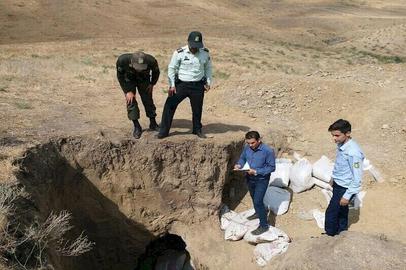
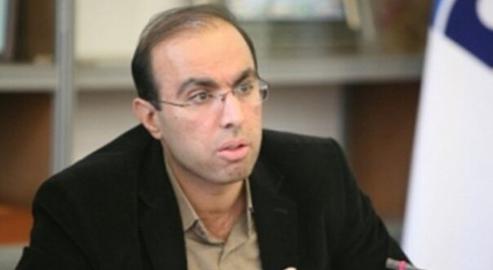
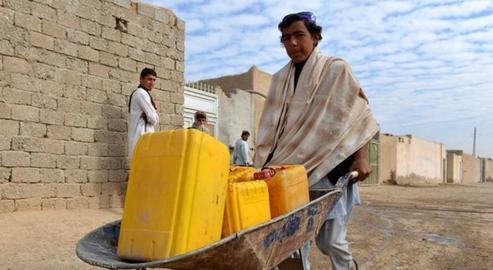
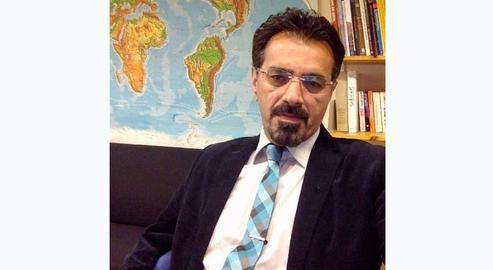

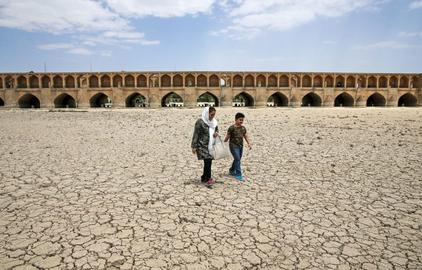



















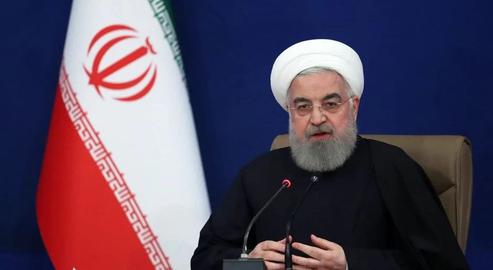
comments